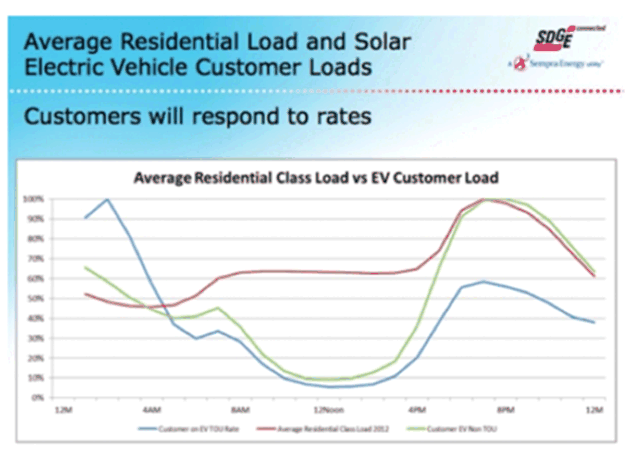3.4 DER Capabilities and DER System Architectures
3.4.6 Electric Vehicles with V1G and V2G Capabilities
Plug-in electric vehicles (PEVs) and all-electric vehicles (EVs) are presenting new challenges to utilities. Although their main purpose is transportation and not energy management, they can have impacts on distribution systems, particularly in aggregate.
On the one hand, utilities can benefit from the increased revenues from these new loads; on the other hand, these loads can potentially cause local peak loads that could cause utility over-voltage situations or even equipment damage. However, if utilities can help manage EV loads through rate incentives or direct signals, PEV/EVs could actually smooth load curves, support frequency regulation, and improve reliability. In this sense, PEV/EVs can be considered as similar to DER systems.
Today all PEV/EVs models provide an on-board charger so that they can be plugged into normal outlets. Since an inverter is also present, some of the “smart inverter” functions could also be provided, so long as these functions do not impact the primary purpose of transportation. There are many technical, economic, and regulatory issues associated with the charging of PEV/EVs, but with respect to their interactions with the distribution grid, two types of connections are possible.
The first is the most common type where PEV/EVs are only charged (termed V1G). Utilities could request that charging times and charging rates be modified in order, for example, to decrease peak loads or even smooth frequency deviations, usually with the proviso that the vehicle is still completely charged by the time the driver needs it. For instance, if EV owners are incentivized by time of use rates (see 3.10.1), then they may choose to (automatically) let the EV chargers only charge the EVs during lower pricing times, such as after the evening (residential) peak, say, between midnight and 5 am (see Figure 12).

Figure 12 : EV charging if TOU rates (blue) versus EV charging without TOU rates (green)
. A new capability known as Vehicle to Grid (V2G) is being discussed with some small pilot projects exploring the capabilities. In V2G, energy can be extracted from a PEV /EV battery and supplied to the electric power system. If V2G is implemented, then it would be expected that all regulatory DER interconnection requirements would need to be met, such as those defined in IEEE 1547 and certified through compliance with UL 1741.However, some issues are raised because PEV/EVs roam across regulatory jurisdictions, making it difficult to determine which regulations must be met. In particular, the UL 1741 certification standard cannot be used as is for inverter systems which are integrated into a PEV, since it is targeted for stationary inverters in a “box” and not for an assembly of devices which are integrated into an automotive vehicle. SAE is creating SAE Standard J3072, Interconnection Requirements for Onboard, Utility-Interactive Inverter Systems, to be used in place of UL 1741. J3072 also requires conformance to IEEE 1547.
Another issue is that different jurisdictions could permit or require different capabilities so that the PEV/EVs would have to “be told” dynamically what functions it could provide. This might be provided through communications, but very little work has as yet been done on this issue.
One popular V2G function is the idea that vehicle owners could use their PEV/EV as backup power during a power outage. This would quickly provide customers with mini-microgrids.